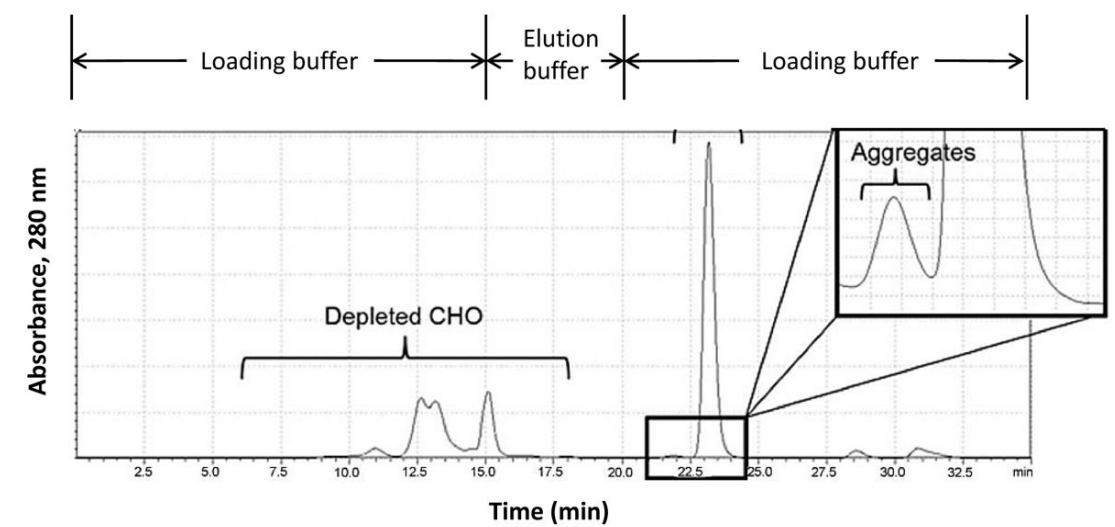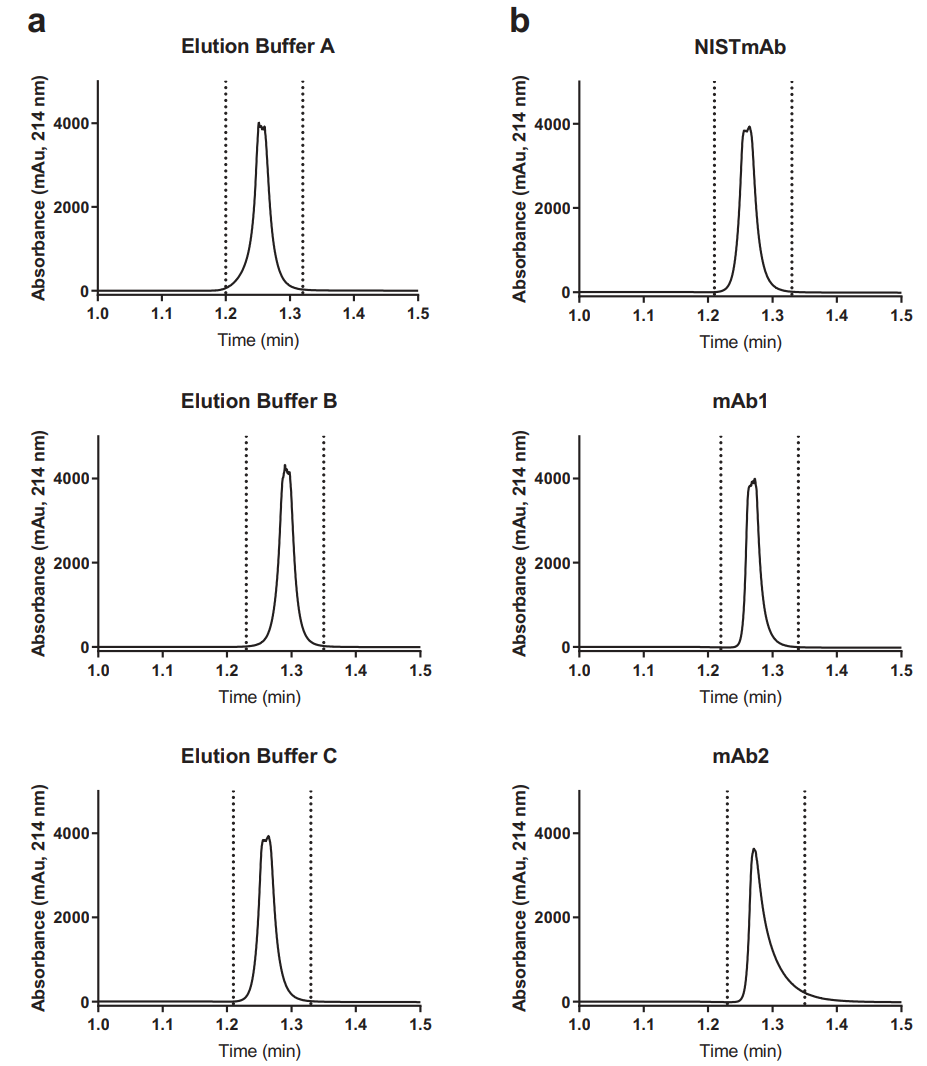HPLC Protein Analysis Service
HPLC protein analysis is a high-performance liquid chromatography technique used for the separation, identification, and quantification of proteins and related molecules. Widely applied in biopharmaceuticals and life science research, HPLC is renowned for its high sensitivity, resolution, and reliability. By integrating various separation modes (e.g., reverse-phase chromatography, ion exchange chromatography, and size exclusion chromatography), HPLC protein analysis provides comprehensive characterization of complex protein samples, including purity assessment, structural analysis, and monitoring of critical quality attributes (CQAs).

Figure 1. The Workflow of Protein Analysis by HPLC
HPLC protein analysis plays a crucial role in addressing key challenges in protein research and production. It enables precise detection of protein purity, aggregates, and degradation products, optimizing production processes and ensuring product quality. Additionally, it can analyze post-translational modifications (e.g., glycosylation, phosphorylation) and protein stability, aiding researchers in understanding protein functionality and its role in drug development. By delivering accurate and reliable data, HPLC protein analysis effectively supports biopharmaceutical development and quality control, addressing technical challenges in protein characterization.
Services at MtoZ Biolabs
MtoZ Biolabs, an integrated chromatography and mass spectrometry (MS) services provider, provides advanced proteomics, metabolomics, and biopharmaceutical analysis services to researchers in biochemistry, biotechnology, and biopharmaceutical fields. Our ultimate aim is to provide more rapid, high-throughput, and cost-effective analysis, with exceptional data quality and minimal sample consumption. MtoZ Biolabs offers HPLC protein analysis service based on an advanced high-performance liquid chromatography platform, utilizing multiple separation modes such as reverse-phase, ion exchange, and size exclusion chromatography to provide high-sensitivity and high-resolution data for protein analysis. Our team of experienced proteomics experts brings extensive technical expertise and practical project experience, offering customized analysis solutions tailored to client needs. Through rigorous quality control and scientific experimental design, we deliver precise analysis of protein purity, aggregates, post-translational modifications, and stability, helping clients efficiently advance drug development and quality research.
Service Advantages
1. High Sensitivity and Resolution
HPLC protein analysis service provides highly sensitive and high-resolution protein separation, enabling accurate detection and identification of proteins, even in complex biological samples, ensuring reliable results for basic and biomedical research.
2. Advanced Instrumentation and Optimized Protocols
HPLC protein analysis service leverages cutting-edge liquid chromatography systems and carefully optimized workflows to achieve consistent and reproducible protein profiling, catering to the stringent demands of clinical applications.
3. Comprehensive Protein Profiling
HPLC protein analysis service supports comprehensive protein characterization, including quantification and identification, delivering actionable insights into biomarker discovery, disease mechanisms, and therapeutic target validation.
Case Study
Case 1: This study introduces a high-throughput analytical method that combines Protein A affinity chromatography with size-exclusion chromatography (SEC) to simultaneously quantify monoclonal antibodies (mAbs), mAb aggregates, and host cell proteins (HCPs) in a single step. This integrated approach enables the concurrent monitoring of mAb monomers, aggregates, and HCP concentrations during cell culture processes, offering a streamlined alternative to traditional multi-step assays. The combined Protein A-SEC method demonstrates accuracy comparable to established techniques like ELISA and Bradford assays, providing a more efficient tool for bioprocess monitoring and optimization.

Gjoka, X. et al. J Chromatogr B Analyt Technol Biomed Life Sci. 2014.
Figure 2. Protein A-SEC HPLC Chromatogram Demonstrating Separation and Resolution of mAb, Aggregates, and Contaminants from Cell Culture Supernatant
Case 2: This study describes a rapid Protein-A (ProA)–Size Exclusion Chromatography (SEC) method based on two-dimensional liquid chromatography (2D-LC) for measuring the titer and aggregation of monoclonal antibodies (mAbs) from harvested cell culture fluid. With the success of mAb therapeutics, increased investment in mAb production has led to a growing demand for technologies to efficiently characterize these biotherapeutics. Due to the large size and heterogeneity of mAbs, multiple critical quality attributes (CQAs) must be measured during production. Current workflows typically require multiple one-dimensional liquid chromatography methods, such as ProA, IEX, SEC, and others. This study leverages 2D-LC technology to simultaneously measure multiple CQAs in a single assay. The authors optimized individual separations and the transfer of materials between dimensions, developing a rapid ProA-SEC method that completes measurements within 5 minutes, offering high speed, resolution, and accuracy. Despite some hardware-related errors, this method significantly improves throughput compared to traditional approaches and provides a foundation for developing other 2D-LC methods, such as ProA-IEX or ProA-HIC. HPLC Protein Analysis Service enables rapid and efficient measurement of critical quality attributes of monoclonal antibody to support quality control and development in monoclonal antibody production.

Dunn, ZD. et al. MAbs. 2020.
Figure 3. Peak Shapes for Different mAbs Eluted from a 1D ProA Column Using Different Buffers
Applications
1. HPLC protein analysis service can be used to monitor protein quality during production workflows to ensure consistency and scalability.
2. HPLC protein analysis servicecan be used to compare the quality attributes of biosimilars to reference biologics for regulatory compliance.
3. HPLC protein analysis service can be used to detect and quantifies protein impurities during production and purification processes.
FAQ
Q1: In HPLC, are components with larger molecular weights eluted first?
Answer: In HPLC, the elution order of components is not directly determined by their molecular weight. Instead, the elution order primarily depends on the interactions between the sample molecules and the stationary phase (the packing material inside the chromatography column). These interactions can include hydrophobic interactions, ion exchange, affinity binding, and others.
1. Hydrophobic Interactions
In reverse-phase HPLC (RP-HPLC), the stationary phase is non-polar, so more hydrophobic (non-polar) molecules interact more strongly with the stationary phase, resulting in longer retention times. In this case, larger molecular weight molecules do not necessarily elute earlier.
2. Ion Exchange
In ion-exchange chromatography, the stationary phase carries a charge, and the primary interactions are with ions in the sample. The retention time depends on the charge and size of the ions, as well as the type of interaction with the stationary phase.
3. Affinity Interactions
In affinity chromatography, the stationary phase typically consists of a biomolecule, such as an antibody or enzyme, that specifically binds to the target sample molecules (e.g., antigen or substrate). The retention time depends mainly on the affinity between the sample molecules and the stationary phase.
While molecular weight can sometimes influence retention time (e.g., due to its effects on hydrophobicity or ionic radius), it is not the main factor determining the elution order. The primary determinant is the interaction between the sample molecules and the stationary phase. Our HPLC protein analysis service selects the appropriate liquid chromatography column based on the sample type and research needs, ensuring the accuracy of the analysis results.
Q2. How can baseline drift in HPLC protein purity analysis be minimized?
Answer: Baseline drift can be minimized through various approaches, such as ensuring the purity of the mobile phase, regularly calibrating the equipment, optimizing the pH and ionic strength of the mobile phase, and thoroughly treating and purifying samples before the experiment. Regular system cleaning and maintenance are also effective preventive measures.
Deliverables
1. Comprehensive Experimental Details
2. Materials, Instruments, and Methods
3. Relevant Liquid Chromatography Parameters
4. The Detailed Information of HPLC Protein Analysis
5. Raw Data
How to order?







